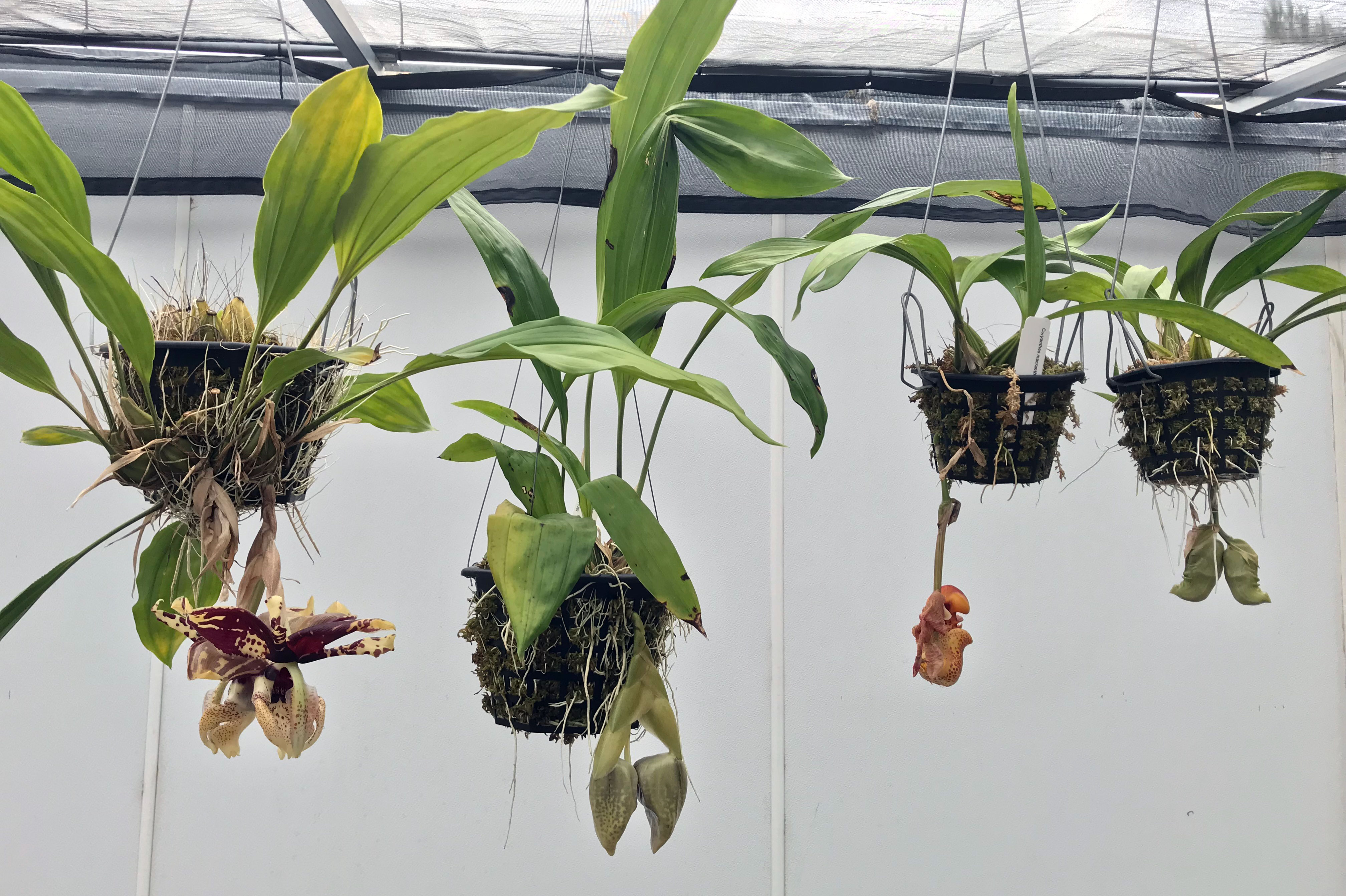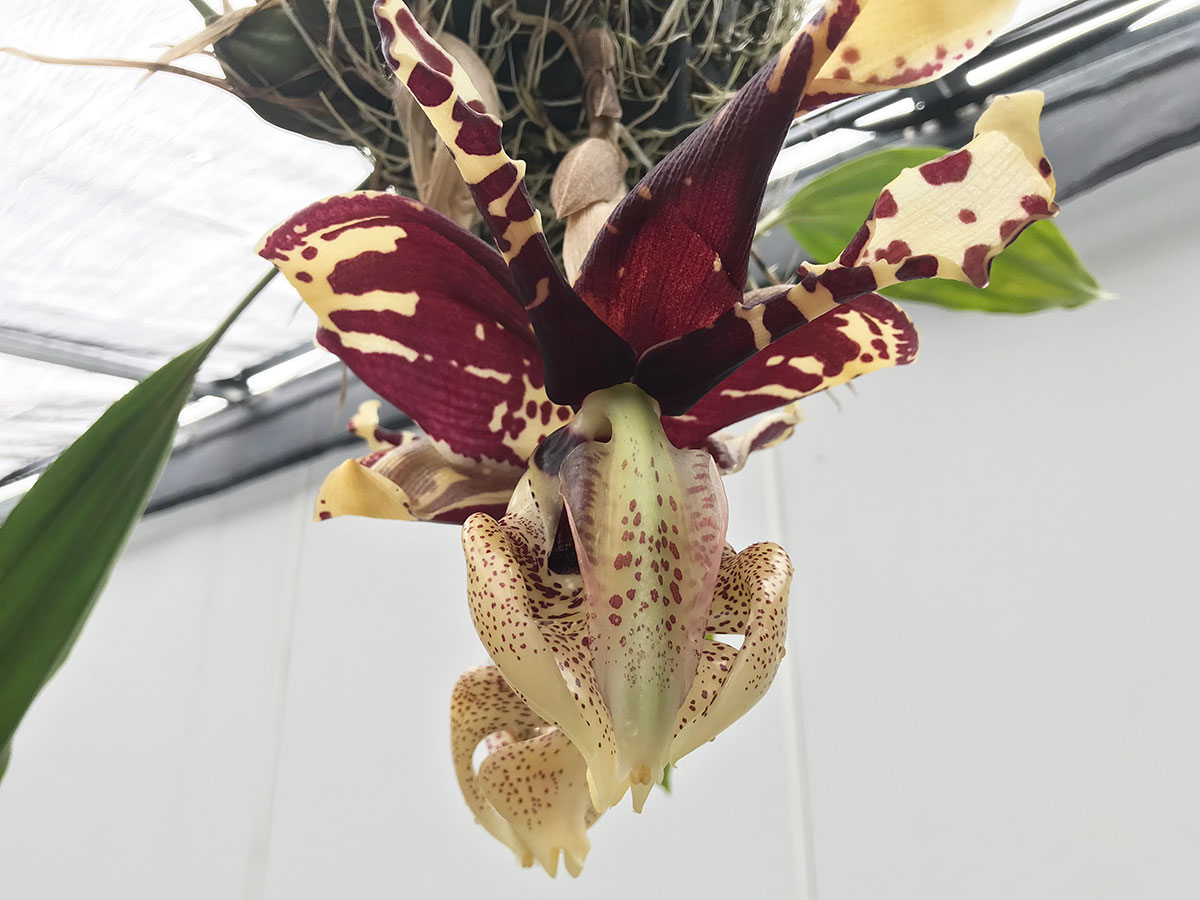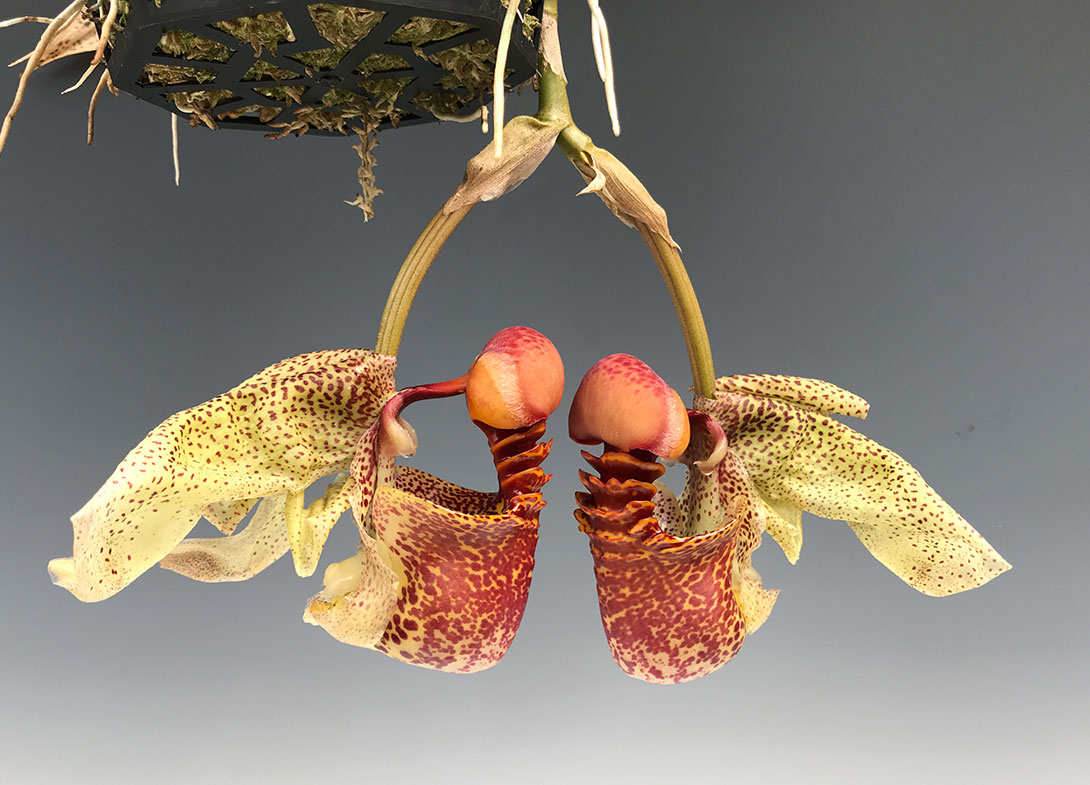Weird & Wild Orchids Of The Summer
Posted by Jason Fischer on Jun 18th 2019
Greetings, fellow orchid growers! For many orchids, summertime is the prime growing season where the goal is to prepare your plants for maximum flower potential in the fall to winter months, however, there are a variety of things we have that do blossom in the summer season only.

Pictured above: Stanhopea in flower and in bud (left), Coryanthes in flower and in bud (right).
For this blog, I’d like to share information about a couple of interesting genera that you may have seen but perhaps have never tried to grow: the Stanhopea and Coryanthes! They are odd, wild-looking, very fragrant with short-lived flowers…but are nothing short of a conversation piece and spectacle when in bloom.
Stanhopea:

Pictured Above: Close up of Stanhopea tigrina in flower
Stanhopea are from Mexico and South America, with many species and hybrids flowering in the summer season. They are very hardy plants that can also be grown outdoors all year long in areas that don't go below freezing in winter (though they prefer a slight cool period in the winter, if possible). The pendant flowers bloom and face downwards, emitting an extremely sweet scent to attract the orchid bee in the wild. Most are big, showy, fragrant and short-lived at 3 days, however, large plants can flower more than once per season on multiple spikes.They love copious amounts of water and fertilizer, and should not be dry during warm weather.
My father told me that back in the '70s (when there was no wild orchid collecting regulation), a grower from Mexico filled up his truck with various plants such as Stanhopea and drove up to the states, making the rounds selling the collected plants to various growers. My father purchased many interesting wild species including two unique ones that as far as we know, have not been in the trade until we produced them via self-pollination. They are the tigrina (aka nigro-violacea) albescens and a compact-growing tetraploid with thick, yellow flowers and burgundy markings.
View our current Stanhopea collection (Please note our selection and availability is always changing)
Coryanthes:

Pictured above: Close up of Coryanthes macrantha in flower.
This is another South American genera, which is warmer-growing than Stanhopea, blooms pendant and has fragrant, 3-day lived flowers. In the wild, ants use the nectar from the flower as a source of food, and in turn make a nest in the root mass of the Coryanthes. They protect the plant from other pests and their nests are acidic, which is how Coryanthes like to grow. They can handle a pH of 3 to 5.5, which is why moss or small pine bark works well with these orchids. Some people have even used lemon juice in their water to keep the pH low for this plant. While keeping the plant wet works best in any environment, having humidity 75 percent or higher will produce very extensive root systems.
This plant is also known as the 'Bucket' orchid, due to the fact it drops sap into a bucket-shaped epichile where an orchid bee will go to explore because of the strong scent. It will then get temporarily trapped in the bucket sap, and since its wings are wet, it is forced to crawl out an exit which holds the pollen. Curiosity will get the best of them and they will repeat the process a 2nd time, fertilizing the plant upon exit.
Video: National Geographic shows the relationship between Coryanthes and orchid bees. We also recently found excellent footage of this process on Netflix's "Our Planet" (hosted by David Attenborough) Season 1, Episode 1 at 24:40 timecode! If you have Netflix, definitely check this out for high definition video.
Check out our past blog post including the Coryanthes macrocorys for another unique video.
View our current Coryanthes collection (Please note our selection and availability is always changing)
In Conclusion:
If you’re looking for something different and unique this summer season, perhaps a Stanhopea or Coryanthes may be just the thing to try! I would recommend Stanhopea to most growers of any skill level, and perhaps Coryanthes to those who have warm-growing environments and don’t mind paying attention to the pH of their water to keep the plants progressing well.
Another note to keep in mind is that the leaves on these genera often have black markings or spots with old age or as a reaction to drought, but it is a common feature of these plants and doesn't always represent a problem.
Either way, you’re in for quite the treat once they flower, even if for just a short time!
Happy Growing,
Jason Fischer

